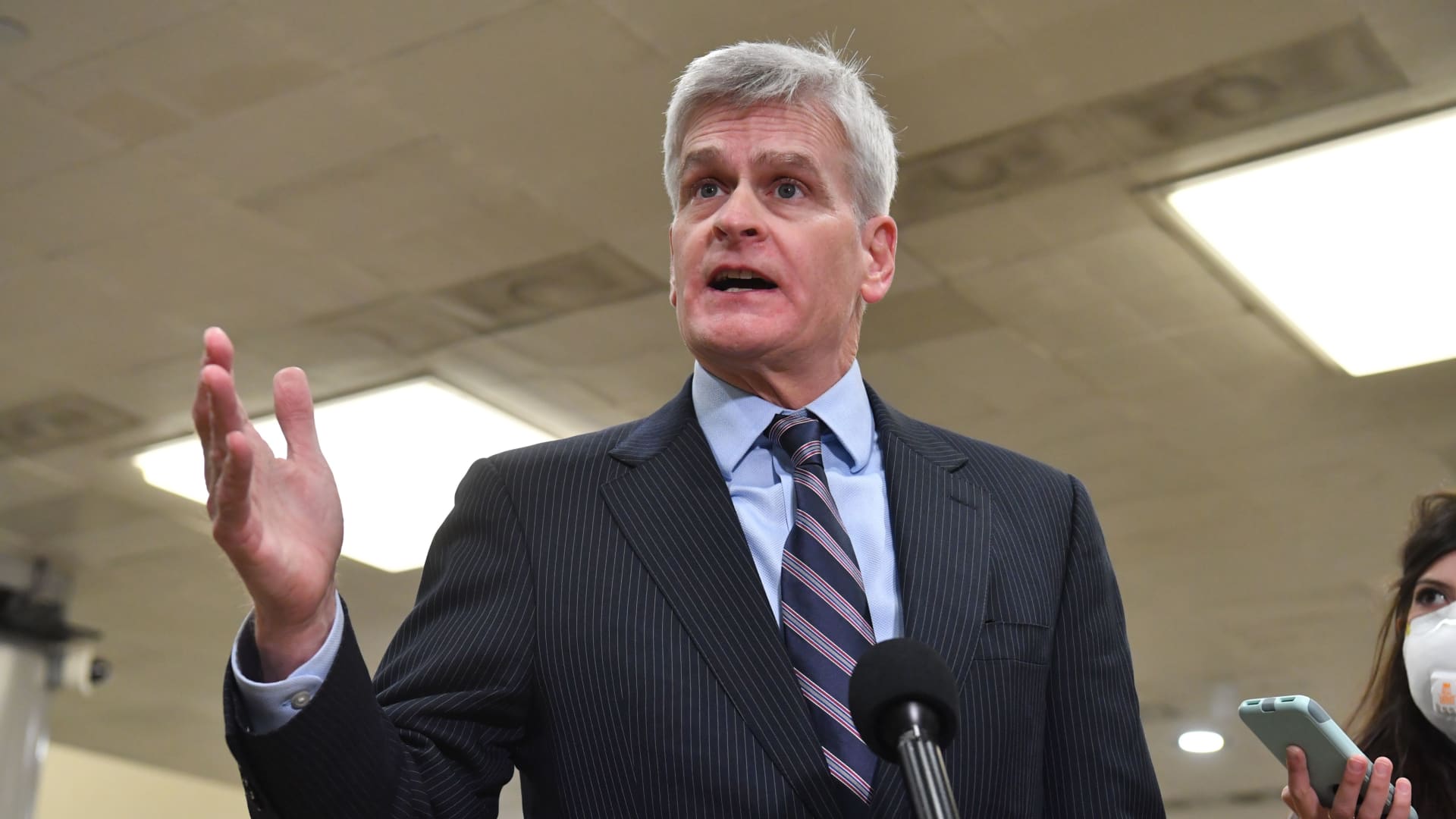Republican Sen. Bill Cassidy of Louisiana speaks to the press on Capitol Hill on Feb. 10, 2021.
Nicholas Kamm | AFP | Getty Images
Social Security’s trust funds have a new projected depletion date that is about a decade away.
Sen. Bill Cassidy, R-La., revealed during a Tuesday webcast hosted by the Bipartisan Policy Center that he is working on a bipartisan “big idea” to address the program’s 75-year shortfall.
The idea calls for creating an investment fund separate from Social Security and allowing the investment to earn returns over a period of 70 years, Cassidy said.
The proposal would repair a key failing of Social Security’s current strategy, which keeps all of the trust funds in either Treasurys or cash, Cassidy said. Treasurys yield anywhere from 1% to 3% at a time when inflation has been up to 7%, he noted.
By allowing the program to invest its funds in the market, which historically has provided more than 8% returns, that could address 75% of the 75-year shortfall, Cassidy said.
“It gets us substantially there,” Cassidy said.
It would target the Social Security trust funds’ biggest weakness, which is that it has “the absolute worst investment strategy you could have right now,” Cassidy said.
“It is the Silicon Valley Bank of pension funds, with an investment strategy inadequate for a high inflation environment,” he said.
We think it’s a really good start on a solution.
Sen. Bill Cassidy
Republican of Louisiana
Cassidy is working with Sen. Angus King, I-Maine, who caucuses with Democrats, to craft a bipartisan solution to fix the program. While the lawmakers have identified the creation of a fund as a key way to address the program’s solvency, the plan is still a work in progress, Cassidy said, with room for participation from other leaders on both sides of the aisle.
“We think it’s a really good start on a solution,” Cassidy said. “Now we need leading presidential candidates to step to the plate, be honest with the American people and help us find the additional 25%.”
‘Big idea’ inspired by private pensions
The idea for investing Social Security’s funds in the market is inspired by private pension funds, which already buy securities outside of Treasurys.
Other similar funds in North America — such as those of the Canada Pension Plan and the Ontario Teachers’ Pension Plan — successfully achieved solvency by switching to market-based investment strategies after operating in the red, Cassidy noted.
“It’s risky not to be in the market,” Cassidy said. “Every fund which takes the risk of not being in the market goes deeply in the red.”
To be sure, the plan would need to include a backstop if the program does not get the yield it needs from the markets, Cassidy said. It would also need to make it so the government would not be able to influence the private markets.
Social Security’s combined trust funds will only be able to pay full benefits until 2034, according to recent projections from the Social Security Board of Trustees. If no changes are made by that time, just 80% of benefits will be payable.
The projected reserve depletion date has been “quite stable” over the past 12 trustees reports, Social Security Chief Actuary Stephen Goss said on Tuesday during the Bipartisan Policy Center’s event.
But while the projections have been in the same range, from 2033 to 2035, the depletion date is getting closer, Goss pointed out.
If the program crosses the depletion threshold, it does not have the authority to borrow the difference, which means benefits will be cut, he said.
“It’s time to be thinking seriously about action,” Goss said.
Possible changes to fix Social Security generally include tax increases, benefit cuts or a combination of both.
The longer lawmakers wait to implement those changes, the more expensive they will be, said Jason Fichtner, vice president and chief economist at the Bipartisan Policy Center.
About 10 years ago, when Fichtner was serving as deputy commissioner at the Social Security Administration, eliminating the limit on the income where payroll taxes could be applied would solve the 75-year solvency. “Now it doesn’t,” Fichtner said.
Moreover, the size of payroll tax increases needed also increase over time, he noted.
“The longer we wait, the harder it’s going to be,” Fichtner said.
Fixes require ‘give and take on both sides’
While Cassidy’s proposal aims to solve 75% of Social Security’s funding shortfall, that still leaves 25% to be resolved.
“You actually have to have both sides to come together to cover that last 25%,” Cassidy said, acknowledging it is “going to take a give and take on both sides,” he said.
While that remains open to negotiation, there are a couple of changes Cassidy vowed lawmakers will not do: raise taxes on seniors or increase the retirement age for seniors.
Cassidy also expressed interest in reforming two rules — known as the Government Pension Offset and Windfall Elimination Provision — that prompt reduced checks for those whose benefits are also based on earned income not covered by Social Security.
Image and article originally from www.cnbc.com. Read the original article here.

